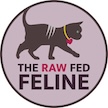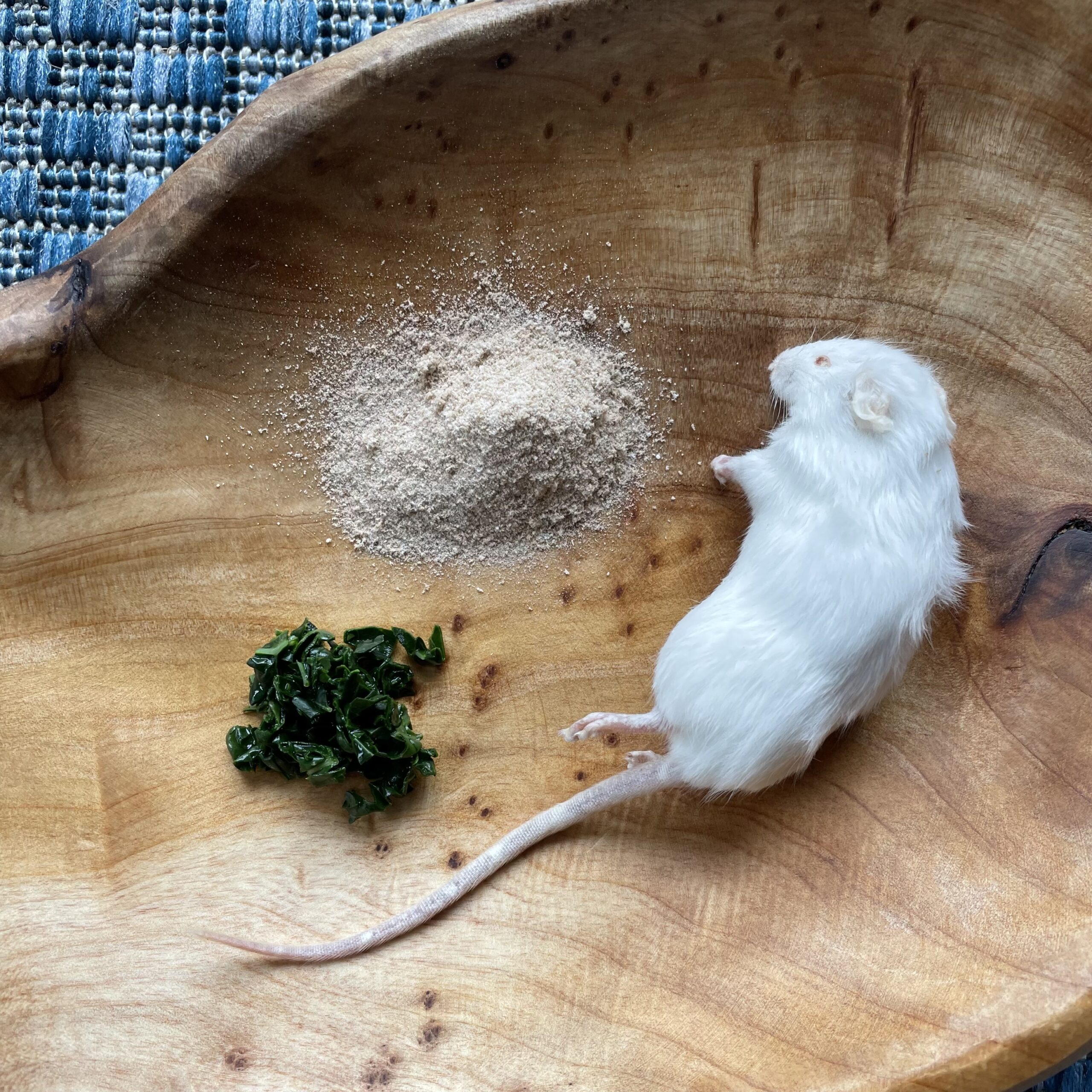Here we are! We have reached the tippy top of the Feline PMR Food Pyramid: fiber and prebiotics and probiotics. These items are optional, rather than essential in the diet. For some cats, one or both of these additions could be very helpful to support gut health. And for others, they may not be needed. Including fiber and/or pre/probiotics is not limited to when you are feeding a PMR based diet. They can be included in any cat’s diet to support gut health. Let’s wade through what they are, so you know if they are something you want to offer your cat.
Both fiber and pre/probiotics have become increasingly popular for cat parents to consider adding to the diet because we are more aware of the importance of gut health. It’s thought that 80% of the immune system is located in the gut, so it’s important to support our cats’ gut health as a means to support their overall health. Both fiber and pre/probiotics can help do this, so let’s take a closer look!
Fiber
First of all, it’s important to note that you will not find a specific nutrient requirement for fiber in the diet of cats. However, fiber can be very helpful for regulating digestion and improving intestinal health. Fibers can be plant or animal based.
animal and plant based fibers
Animal based fibers are typically proteins. These include tendons, cartilage, collagen, fur, feathers, and the skin of prey animals. Plant fibers are technically carbohydrates. These can include leafy greens, other non-starchy vegetables, fruits, bran, and psyllium husk.
All fibers, animal or plant based, by definition are non-digestible in the small intestine and do not provide a source of energy. Instead they are fermented in the large intestine into short chain fatty acids. These short chain fatty acids help support intestinal cellular health.
soluble and insoluble fibers
Fibers can be classified as soluble or insoluble. Both kinds of fiber serve important functions. Soluble fibers form a viscous solution with water and are highly fermentable in the large intestine. They can retain water and help make feces softer. This can be very helpful for cats who struggle with constipation. However, too much soluble fiber can cause loose stool, flatulence, and even diarrhea.
On the other end of the spectrum are insoluble fibers. These are less easily fermented in the large intestine and ferment much more slowly. Unlike soluble fibers, insoluble fibers do not mix with water. They are helpful for providing some bulk to the feces. This can help cats with anal gland issues or with loose stool. However, too much insoluble fiber can cause constipation.
how much and which ones
Fiber is typically included in the range of 1-2% of the diet. It is generally suggested to feed a ratio of 1/3 soluble to 2/3 insoluble, although individual cats’ needs may vary. Including whole prey in your cat’s diet is an easy way to provide some animal based fibers. Another popular option is psyllium husk, which provides mostly soluble fiber in pets’ diets. Including a small amount of cooked leafy greens, like kale, is another way to offer fiber. Kale has a pretty balanced ratio of soluble to insoluble fibers. Coconut fiber has become an increasing popular option when insoluble fibers are needed. You may have to experiment with what fibers work best for your cat.
The best way to tell if your cat would benefit from fiber is by the consistency of their stool. If your cat struggles to have consistently well formed stool or strains to produce hard, pellet-like stool, fiber could be helpful. You want to start with a very small amount of any fiber source and then pay attention to the litter box and make any adjustments as needed.

Prebiotics and probiotics
Now let’s consider prebiotics and probiotics. This topic could be a book by itself, so I won’t get into all of the nitty gritty, but suffice it to say, there is new research about the gut microbiome all of the time. We are learning more and more about the little universe in our gut and how it impacts our overall health and well being. The same is true for our cats.
the gut microbiome
One of the best ways to support gut health is to feed a varied, species appropriate diet.
The gut microbiome refers to the population of both good and bad bacteria in the gut. In a healthy animal, the good bacteria outnumber the bad. The specific kinds of bacteria present are influenced by the diet as well as lifestyle and health status. The food eaten influences which bacteria proliferate in the gut. If you only feed one or two foods/proteins, then those related bacteria will be more plentiful. If you feed a more varied diet, then there will be more different kinds of bacteria, which strengthens the overall system.
This is why a cat that has been fed one food will experience significant diarrhea and gastrointestinal upset when a new food is fed. There is not any other bacteria present in the gut other than ones related to the one food. When a cat is fed a more varied diet, there is much less digestive upset as there are plenty of diverse bacteria available in the gut to handle different foods.
gut support
Prebiotics and probiotics are another way to support the gut microbiome. Prebiotics are the food for the probiotics. They are technically non-digestible carbohydrates, specifically oligosaccharides. They help stimulate the growth of good bacteria and inhibit the growth of bad bacteria. The most common prebiotics that you will see in supplements are MOS, FOS, and Larch Arabinogalactan. You want the probiotics you use to have prebiotics included.
Probiotics are actual living microorganisms. They help populate and maintain a proper balance of bacteria in the gut, and when the gut is balanced, the body is more balanced.
not all probiotics are created equal
Not all probiotics are the same though. Probiotics need to be able to survive the acidity of the stomach and make their way to the intestines in order to be effective. They also need to be able to adhere to the intestinal lining to proliferate and do their job. Additionally, it is important to choose probiotics that have enough colony forming units (CFUs) as well as different strains of microbes to be effective. It’s a good idea to aim for CFU amounts in the billions rather than millions. Let’s look at a few products for comparison.
Felix’s Flora, a popular cat specific pre/probiotic, has 17 strains (including 3 feline specific ones) and 2 billion CFUs.
Love Bugs, another pre/probiotic option from the same company, has 14 strains and 30 billion CFUs. Both of these include Larch Arabinogalactan as the prebiotic.
The NOW brand has a pre/probiotic that has 10 strains and 25 billion CFUs. It uses FOS as the prebiotic.
FortiFlora, a popular mainstream probiotic, only has 1 strain and 100 million CFUs, and no prebiotic.
As you can see, there are some differences to keep in mind when choosing one for your cat.
when are pre/probiotics needed
There are two schools of thought about the need for pre/probiotics in the diet. One point of view is that they are only needed for a reason: if your cat has had antibiotics, during the transition to new foods, etc., but that a diverse and varied diet will support a healthy gut microbiome without the need for pre/probiotics as an additional supplement. The other point of view is that stress, exposure to chemicals, poor soil conditions that impact the food chain, etc., are constants in our cats’ lives, so giving probiotics more regularly is helpful for overall gut support and immunity.
If your cat has had antibiotics, then including pre/probiotics to help rebuild the gut microbiome is essential. Some people will rotate which probiotics they give and/or provide them on a two week on, two week off schedule. There is no one right way, so you want to pay attention to your cat’s gut health and their history to determine if including some pre/probiotics would be beneficial.
summary
In summary, both fiber and pre/probiotics can be helpful additions to support your cat’s gut health and overall immunity. Whether they are needed or not, really depends on your individual cat and their health and diet history.
I hope that you have enjoyed this series of posts about the PMR Pyramid for Felines. Let me know if you have any comments or questions below!


